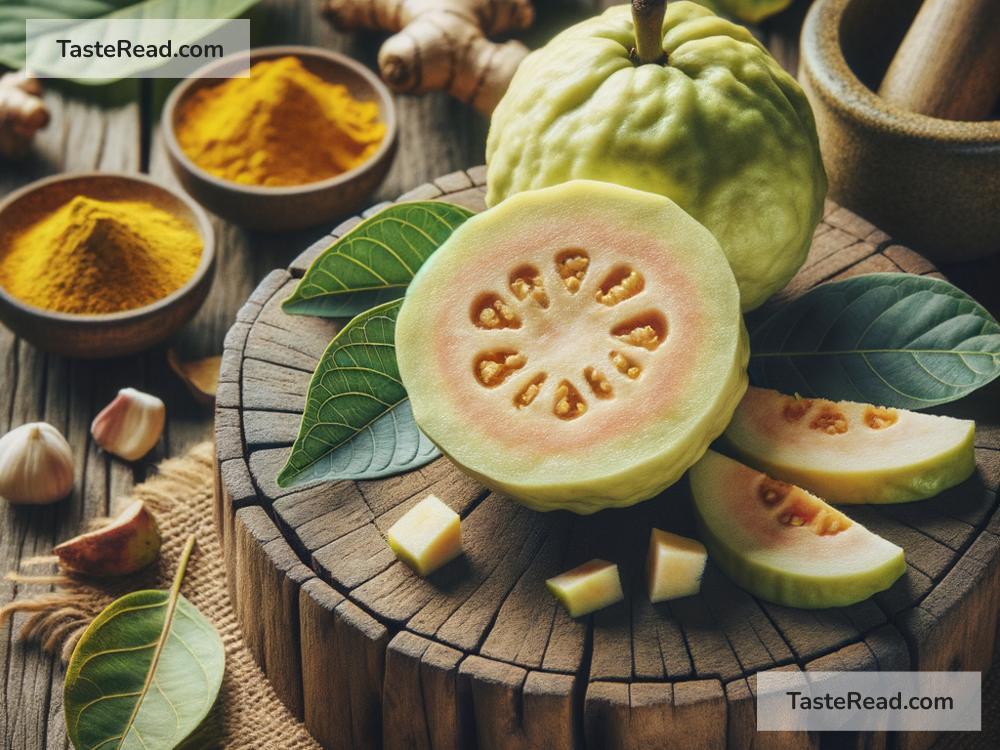The Curious Tale of Guavas in Traditional Medicine
If you’ve ever bitten into a ripe, juicy guava, you likely experienced its sweet taste and unique flavor. But did you know that guavas—those humble tropical fruits—have a fascinating history in traditional medicine? Beyond their role as a delicious snack, guavas have been used for centuries by different cultures to heal the body, boost health, and treat ailments. This simple fruit hides an impressive resume in the world of natural remedies!
The Guava Plant: A Quick Introduction
Guava is native to South and Central America and the Caribbean, but it is now grown in tropical and subtropical regions all over the world. The plant belongs to the Psidium genus, and the most common type is Psidium guajava, or apple guava. Its fruit is often round or oval-shaped, with green or yellow skin and pink, white, or red flesh. Aside from its tasty fruit, the guava tree’s leaves, bark, and roots are also highly valued in traditional medicine.
Guavas in Ancient Cultures
Early records suggest that guava has been used medicinally for thousands of years. Indigenous peoples of the Americas, including the Aztecs and other Native groups, were among the first to recognize its healing properties. They used guava leaves and fruit to treat digestive problems, wounds, and respiratory issues.
As exploration and trade spread around the globe, guavas gained recognition in other regions, including Asia, Africa, and the Pacific islands. In Ayurvedic medicine, which originated in India, guava is mentioned for its ability to improve digestion and treat skin conditions. Similarly, in traditional Chinese medicine, guava was praised for balancing the body’s energy and treating diarrhea.
What Does Guava Do for Health?
Modern science has confirmed some of the health benefits that traditional medicine claimed long ago. Here’s a look at some of the ways guava has helped people maintain good health through the ages:
1. A Helper for Digestive Problems
One of guava’s most famous uses in traditional medicine is as a remedy for stomach issues. Guava fruit contains dietary fiber, which helps keep digestion smooth and prevents constipation. Meanwhile, guava leaves have anti-diarrheal properties. In many cultures, people make tea from boiled guava leaves to treat upset stomachs or food poisoning.
2. A Natural Antibiotic
Guava has natural antimicrobial properties. In ancient practices, guava leaves were often applied to wounds or cuts because they helped fight infections and speed up healing. Some studies today suggest that the compounds in guava leaves can kill harmful bacteria and reduce inflammation.
3. Respiratory Relief
In traditional medicine across numerous cultures, guavas were used to treat coughs and colds. Guava leaves, when made into tea, were often used for soothing sore throats and reducing mucus production. The fruit itself was also valued for its vitamin C content, which boosts immunity and helps the body fight infections.
4. Skin Saver
Did you know that guava was historically used to help with skin conditions? In both Ancient India and indigenous Latin American cultures, guava was valued for its healing powers on the skin. Its high vitamin C content, combined with antioxidants in the leaves and fruit, was believed to promote glowing skin, slow aging, and soothe rashes or irritation.
5. Blood Sugar Control
In traditional practices, guava leaves were used to support people with diabetes. Studies show that guava leaf extract can help lower blood sugar levels and improve the body’s insulin sensitivity. While not a replacement for medical treatment, it has become a popular supplement for people managing their blood sugar.
Modern Science Meets Tradition
The medicinal value of guava has caught the attention of researchers worldwide. Scientists have confirmed many of the traditional claims about guava’s health benefits, attributing its healing properties to the fruit’s rich nutritional profile. Guava is packed with vitamins A, C, and E, as well as potassium, magnesium, and antioxidants. These nutrients make it a powerhouse for overall health—and more reasons for people to include guavas in their diets.
For example, guava’s high vitamin C content strengthens the immune system and combats oxidative stress, while its fiber aids in digestion. Its natural antimicrobial and anti-inflammatory compounds account for many of the traditional uses, like treating infections and soothing respiratory issues. Current research into guava leaves even points to potential benefits for heart health, cancer prevention, and weight management.
How Guavas Are Prepared in Traditional Medicine
In traditional medicine, guavas are used in a variety of ways. The fruit is consumed raw or boiled to extract its juices. The leaves, however, are most often prepared as a tea. To make guava leaf tea, fresh or dried leaves are boiled in water, creating a drink that is both aromatic and healing. In some practices, the leaves are crushed and applied directly to the skin or wounds, while the bark can be boiled to make medicinal concoctions.
Guavas Today: A Link to the Past
It’s amazing how this simple fruit has connected generations of healers and cultures around the globe. From ancient remedies to modern supplements and scientific studies, guava has proven itself to be more than just a tropical treat. Its impressive health benefits are a testament to the wisdom of traditional medicine.
So the next time you see guavas at a market or snack on a slice, remember—this small fruit holds centuries of healing stories within it. Whether you enjoy it for its flavor or explore its medicinal uses, guava truly is nature’s wonder fruit with a curious and inspiring tale.


